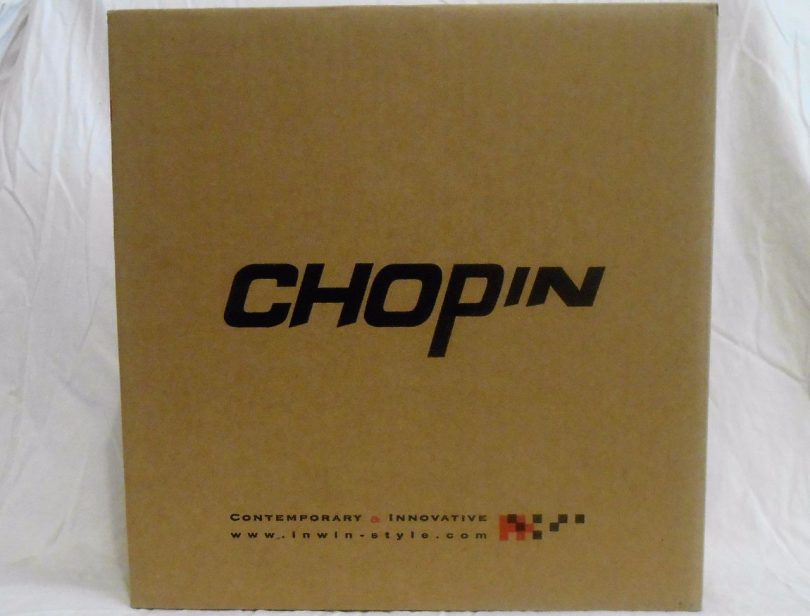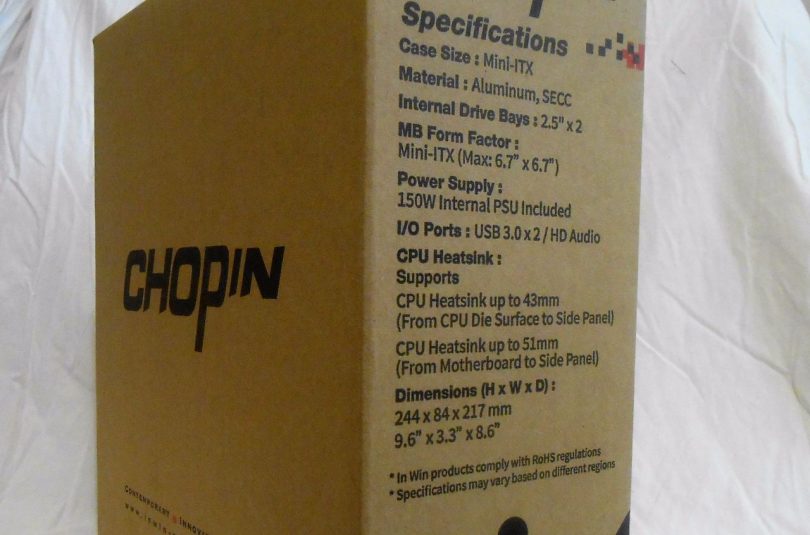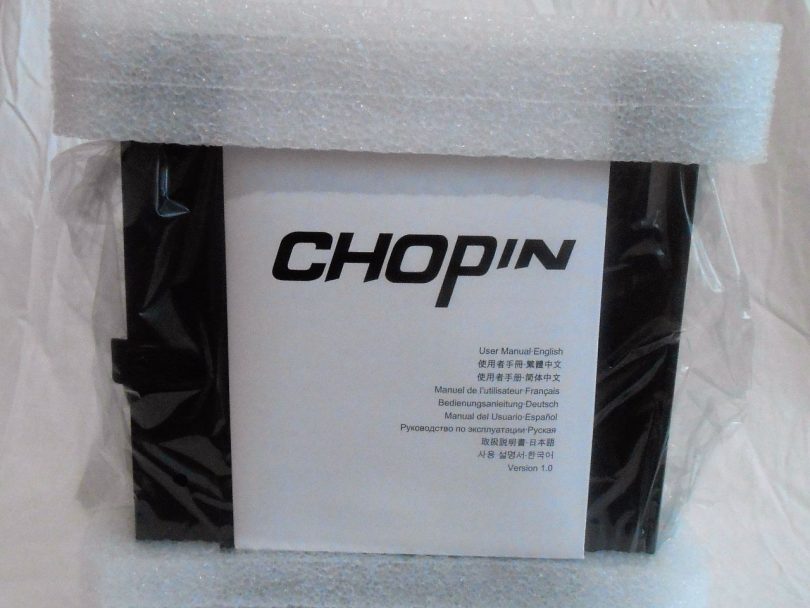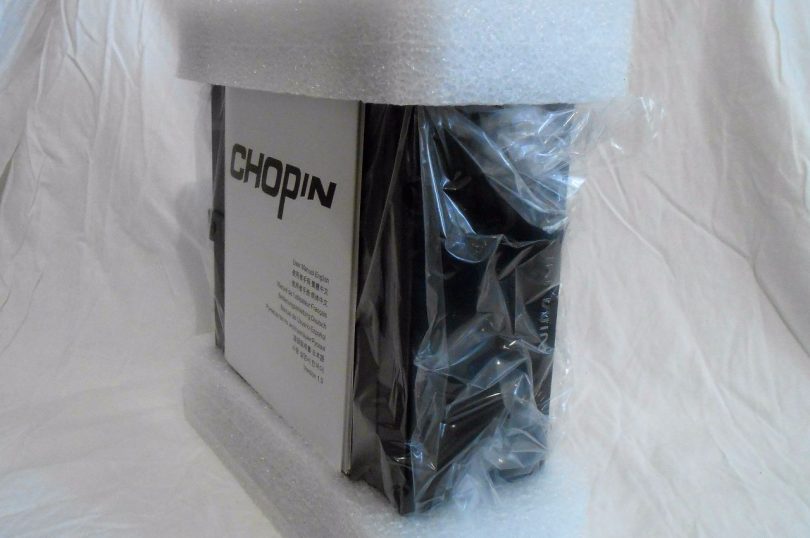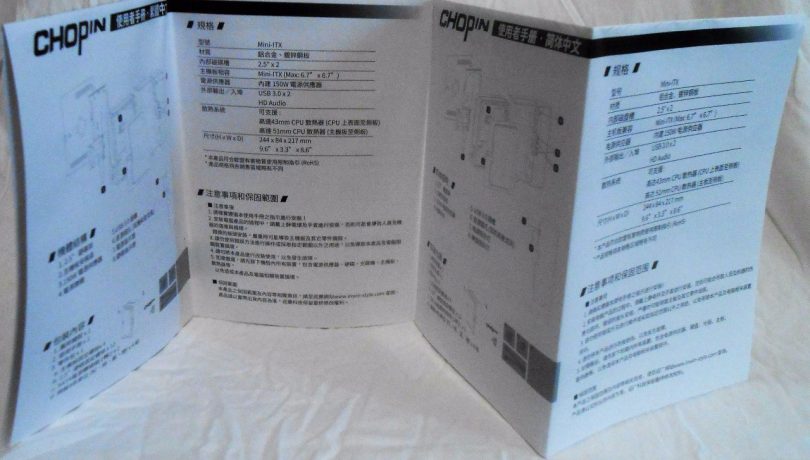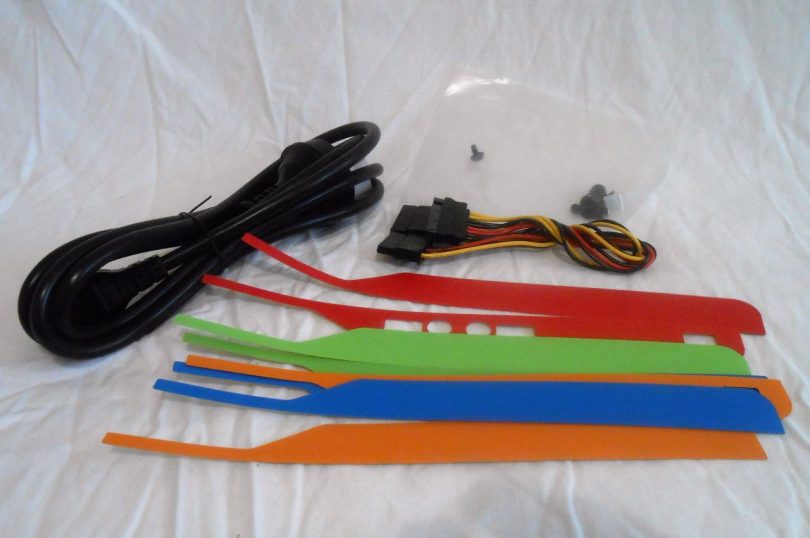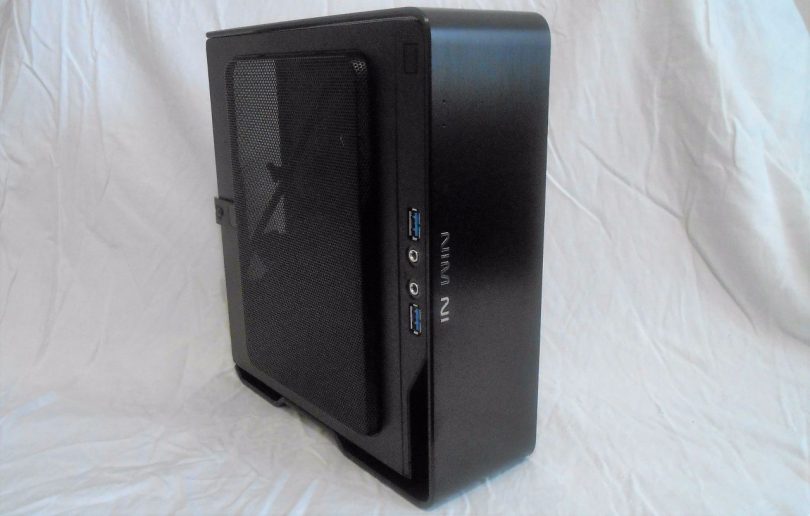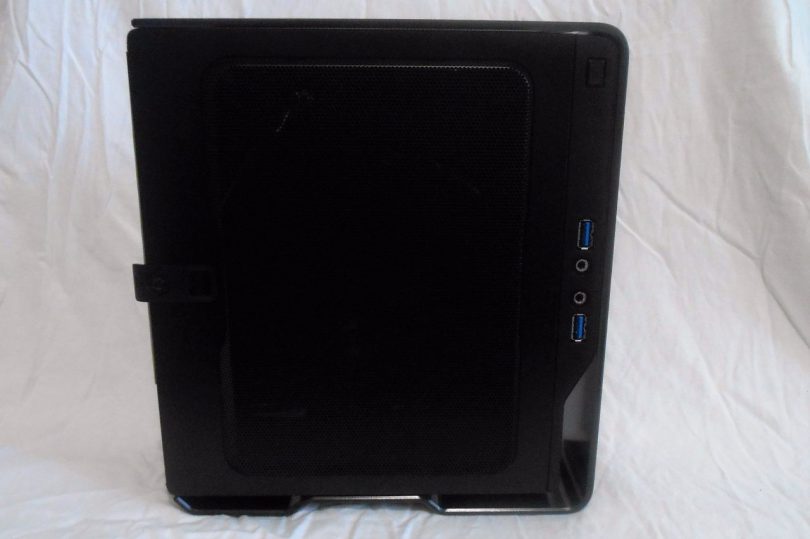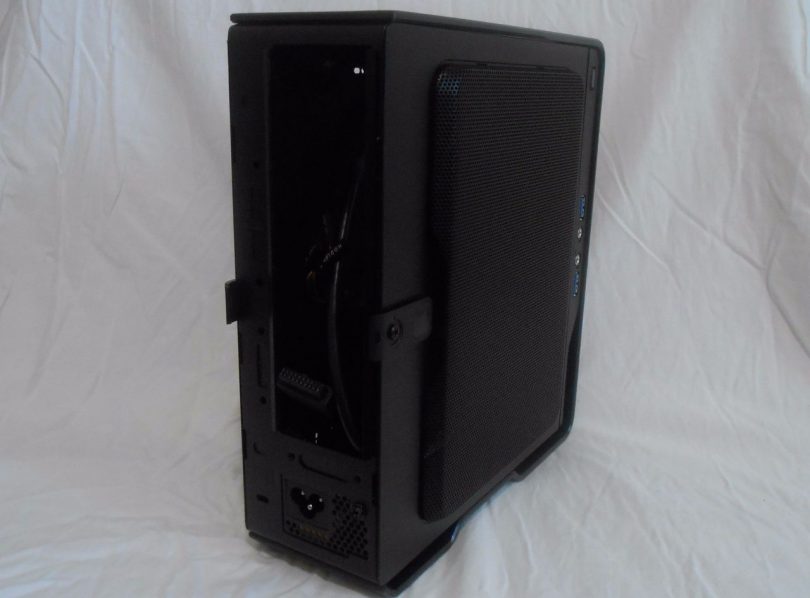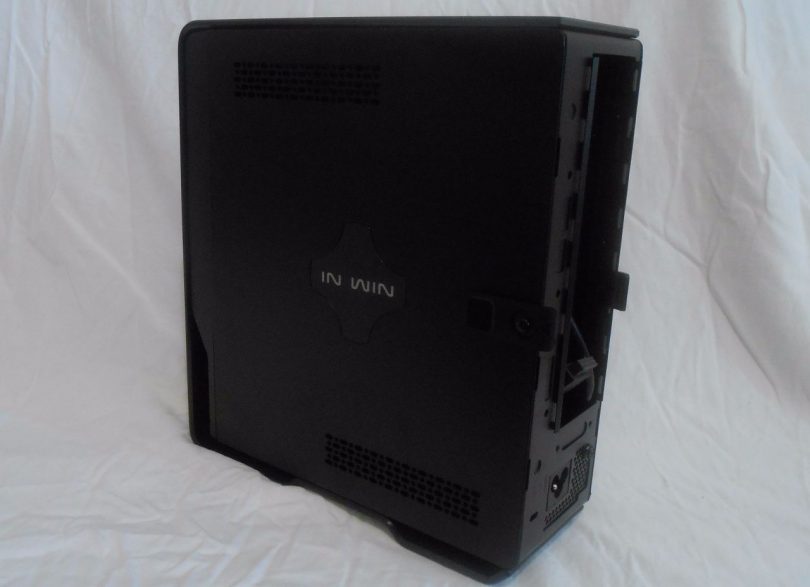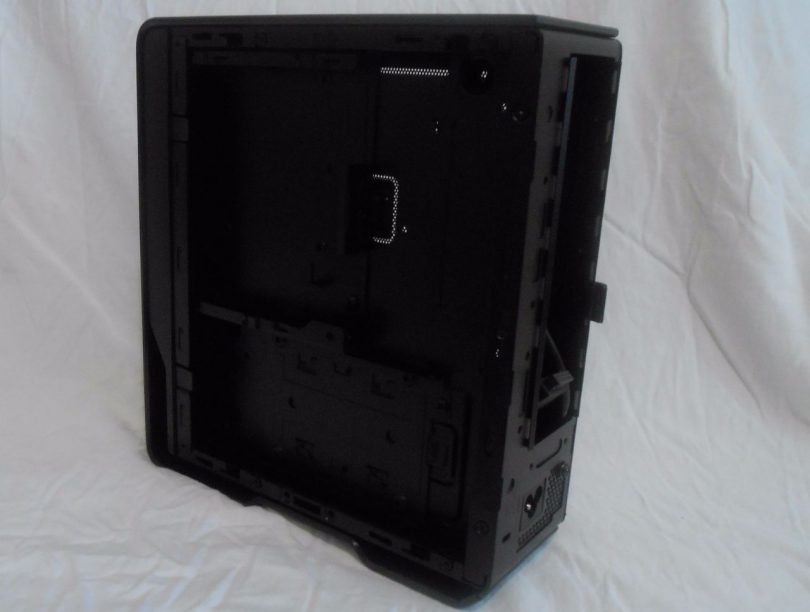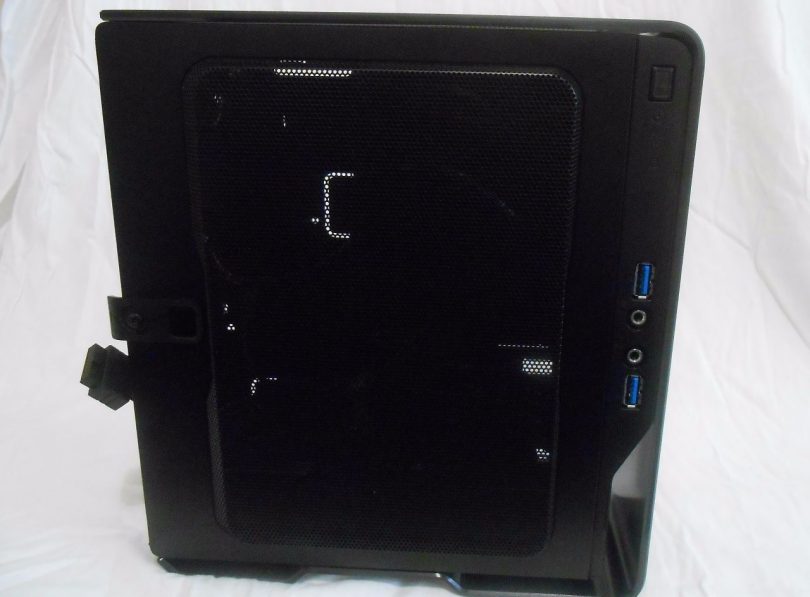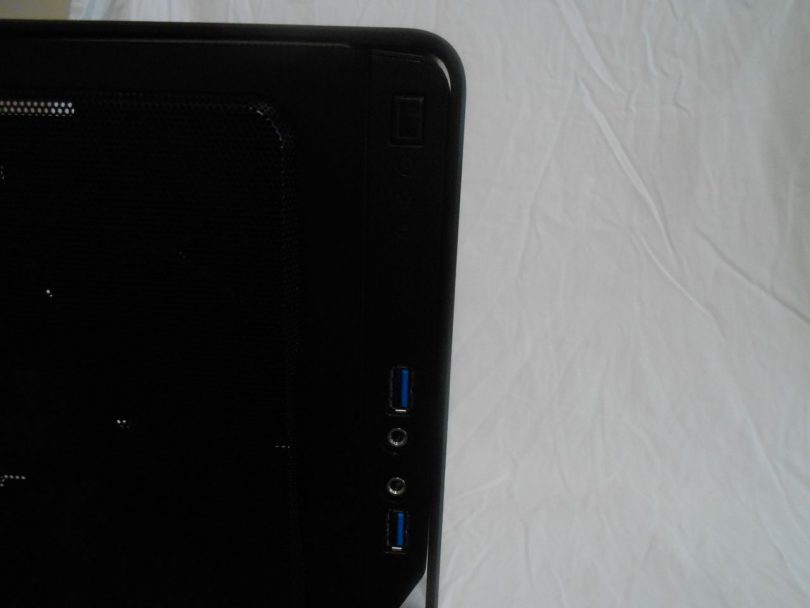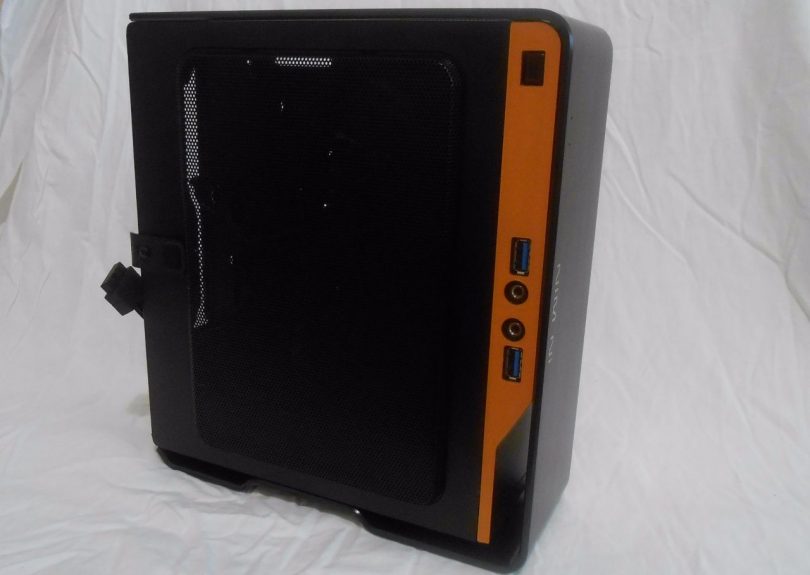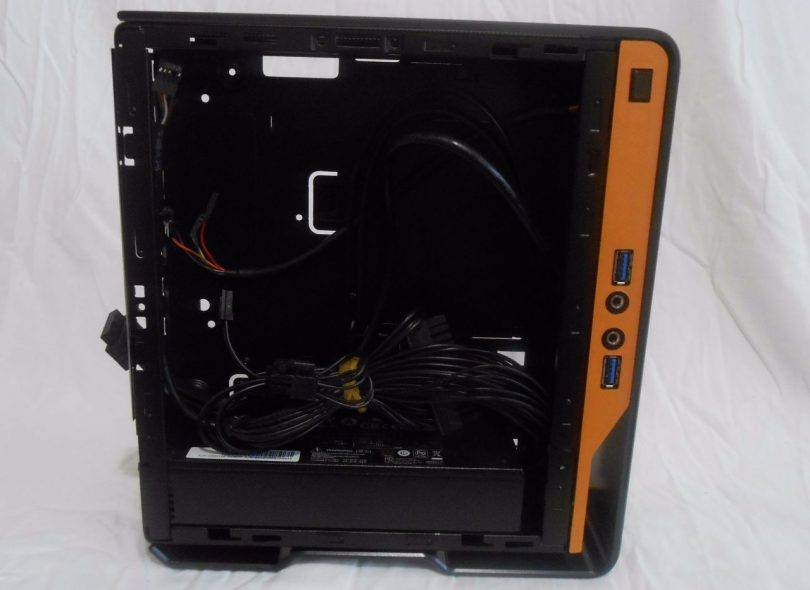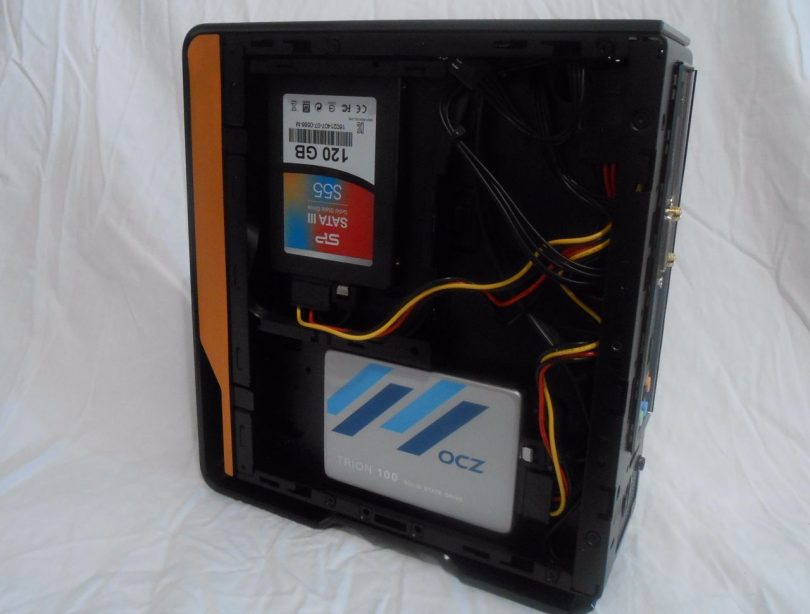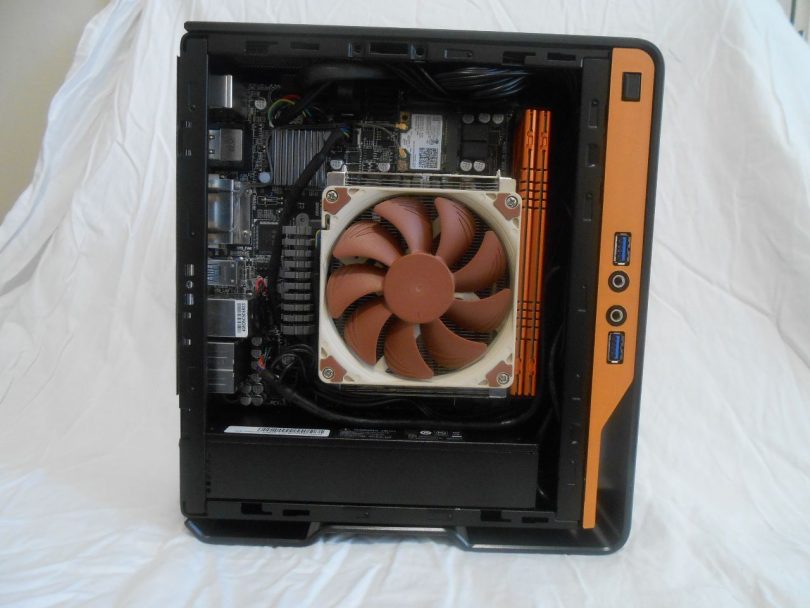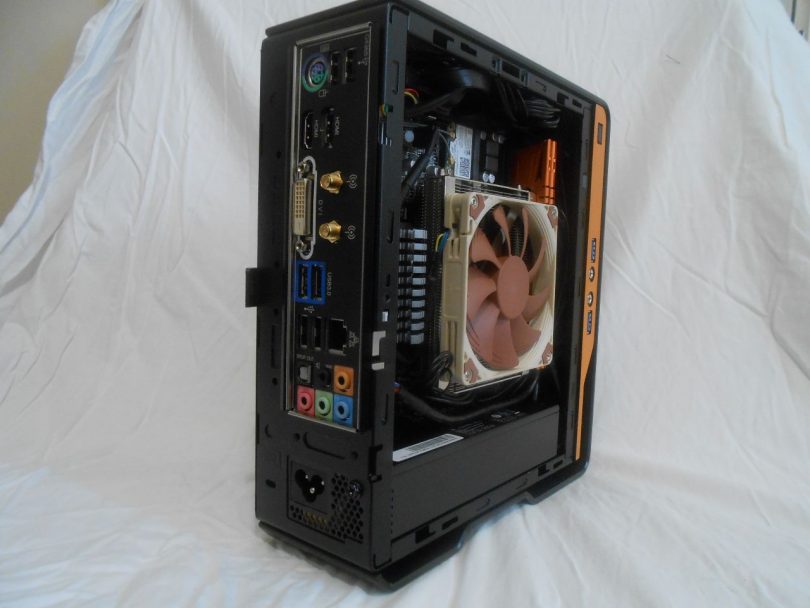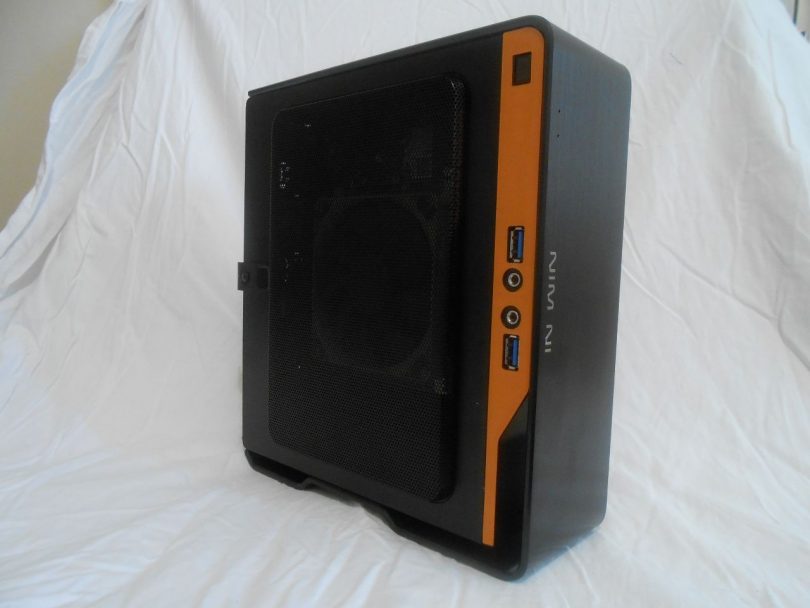In-Win, known for some time for their creative (but generally unremarkable) SFF designs, has been branching out as of late. From their H and D Frame cases, to more sedate variants, the company has begun to make inroads towards the mainstream market instead of the traditional OEM and system integrator markets.
Today we are looking at the In-Win Chopin, a premium take on the BQ series. This case features an integrated 150w PSU, a mixed aluminium and steel design, and an interesting design element that we may have seen before, which we’ll discuss below.
[mks_separator style=”blank” height=”2″]
Specifications
| Colour Options | Black, Silver |
| Case Type | M-ITX |
| Case Material | Aluminium, SECC |
| Board Compatibility | M-ITX |
| Expansion Slots | None |
| Front Ports | 2x USB 3.0, HD Audio |
| External Drive Bays | None |
| Internal Drive Bays | 2 x 2.5″ |
| Case Dimensions | 244mm x 84mm x 217mm 9.6″ x 3.3″ x 8.6″ |
| Case Volume | 4.45 Litres |
| Net Weight | 2.2kg / 4.8lb |
[mks_separator style=”blank” height=”2″]
Unboxing
The In-Win Chopin comes in a somewhat plain brown cardboard box, with no major hints as to the level of quality or features to be expected.
On one side, a short spec list is printed, pretty much what I entered into the table above.
The case is well packed, with medium density foam on each end, and a clear plastic bag protecting the case. The user manual slots neatly into the foam.
The manual is clear and provides information in various languages, though it’s a little unwieldy as it’s a single piece of paper with no pages! Think a fold out poster.
The accessory package is simple but satisfactory. A power cable for your region is included; the power supply end of this cable is the clover leaf style, not the kettle lead style you would usually find on a power supply. Also included is a single SATA to 2 x SATA adapter, albeit disappointingly not in all black. The reason for this adapter will become clear later, though. Finally, a small baggy of screws is also included.
[mks_separator style=”blank” height=”2″]
The Case
The case! I went for the black version – and yes, this is for my personal system, rather than as a pure review sample. I even paid real monies for it!
The logo is resplendent in shiny silver, standing out boldly from the black anodised finish of the aluminium shell. Oddly enough, though, the existence of the logo on In-Win products is a bit of a lottery, and I’ve been told by retail staff that quite a few Chopins, as well as other In-Win products, occasionally come logo-less.
In any case, the usual front panel ports are located here on the side, including a power button, 2 x USB 3.0 ports, as well as mic and headphone jacks. The white status LEDs shine through small holes drilled in the aluminium, facing forward.
The left side of the case has a large mesh screen built into the side panel. The panel itself is retained with a screw, which (once unscrewed) allows the use of the plastic clip. Upon pulling aforementioned clip, the panel can be slid towards the rear of the chassis.
The shape of the aluminium outer shell is also clear in this shot, curving round from the top of the case, down the front, and under the bottom. A slight bump is also present in the bottom of the piece, adding to the feel of it being the “base” of the case. The shell is very reminiscent of another SFF case..
At the rear of the enclosure, the case is relatively simple, but the first hint is shown as to the internal layout – there is space ‘under’ the board! This does lead to a restriction in CPU cooler height, which is to be expected considering the form factor.
The power supply is located at the bottom of the case, and is of a proprietary design – and thus more difficult to replace, if it fails outside of warranty. Also notable are the various unfinished cutouts for various options that can be added.
On the right hand side, an In-Win logo is marked in the center, along with simple venting and the same panel retention mechanism as the opposing side.
Let’s begin to disassemble this. Taking away the side panel reveals the drive mounting side of the case. This side includes 2.25″ drive mounts, one of which amusingly is a slimline optical drive sled – it seems they just carried this over from another variant of this core chassis that does have an optical drive option. Curious.
On the left hand side, you’ll notice that the panel is mostly mesh. On the positive, this enables the best possible cooling for the components inside – but that comes at a cost of an increase to dust ingress, since this mesh isn’t filtered in any way.
The aluminium shell’s shape is clear in this shot, forming a ‘C’ shape around the core steel chassis.
‘Front Panel’ IO features a power button, 2x USB 3.0 ports, mic and headphone 3.5mm sockets. This is about normal these days, and the only thing missing here, in my opinion, is the inclusion of a reset switch, or maybe USB Type C.
Now with the orange accents installed! The accent strips are self-adhesive Mylar, and enable you to match the case to your home decor, or PC components. I opted for orange here, because… well, orange is awesome. That’s reason enough.
Internally, the case is a snug fit, as is to be expected at a scant 4.45 litres! The PSU cables are well designed, though, being almost perfect lengths for most M-ITX boards out there, without the miles of extra wire usually found on SFX or Flex-ATX power supplies.
While there are no obvious cable routing or tidying options, it is possible to build a very clean system in this case – as I will demonstrate below.
[mks_separator style=”blank” height=”2″]
The Build
First up – the drives. As you can see, the drive layout isn’t the neatest, which is partly the fault of the optical drive sled that In-Win has repurposed. The included PSU only has one SATA power plug, so the coloured wires you see here are the 1 => 2 adapter that In-Win has included with the case. Seriously though, would black cables be that hard to use instead, In-Win?
Cables… What cables? Through great cable length decisions by In-Win, and the layout of my board, it was very easy to get a mostly tidy cable management result with the Chopin. Installing the board was a tight fit, with the board only clearing the cables with a little bit of pressure. Apart from this minor hurdle, though, the build went as expected for this form factor. The visual result speaks for itself.
From the rear, my board’s black IO shield makes this build look really clean! I do appreciate that In-Win took the time to powdercoat the entire chassis.
All sealed up and ready to go!
[mks_separator style=”blank” height=”2″]
Conclusion
Overall, my continuing experience (this was purchased for my main system after all!) with the In-Win Chopin has been very good. The build quality is above average, cooling is as expected for a mostly open chassis, and the power supply is mostly quiet. Well, compared to the Flex-ATX PSU and related case that it replaced, it is very quiet, but that’s being a bit pedantic.
The various mounting options for the drives, as well as the customisation offered by the coloured Mylar strips, leads to some customisation of your build, and the excellent cable length choices by In-Win’s engineers leads to great cable management. Both of these are good features that add some value and really enhance the aesthetics.
All is not perfect however, due to In-Win’s use of an existing chassis. The use of the optical drive sled for a 2.5″ mount, the blanked off port spots on the rear, and the single SATA power connector on the PSU all point to corners cut for the sake of using existing factory tooling to cut costs. Oh, and by the way, In-Win, who’s going to use a component in their Chopin that uses the ‘Berg’ or floppy drive power connector? That spot on the loom could have been much better served by a second SATA power plug.
All in all, though, that cost cutting alongside an otherwise-great execution means that the In-Win Chopin offers decent value for money, and excellent aesthetics for the market segment it sits in.
[mks_separator style=”blank” height=”2″]
Pros
- Great value for money
- Good build quality
- Quiet, quality PSU
- Customisable
Cons
- Optical drive sled 2.5″ drive mount
- Single SATA power plug on PSU loom
[mks_separator style=”blank” height=”2″]
The In-Win Chopin is available from around $90 on Newegg.com
[mks_separator style=”blank” height=”2″]
Thoughts? Discuss them in the forum.
[mks_separator style=”blank” height=”2″]
Here at SmallFormFactor.net we give manufacturers the ability to be part of the community. We offer a right to reply to hardware reviews. If a manufacturer responds, their comments will be posted here.

